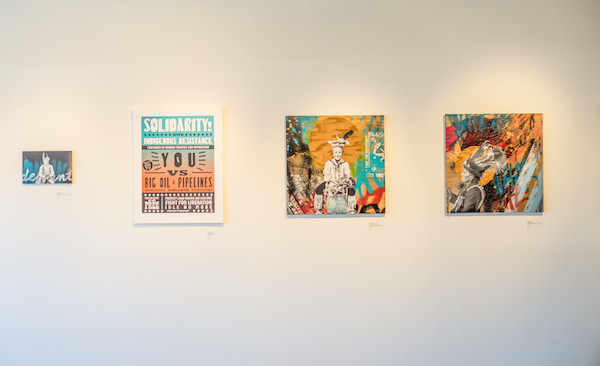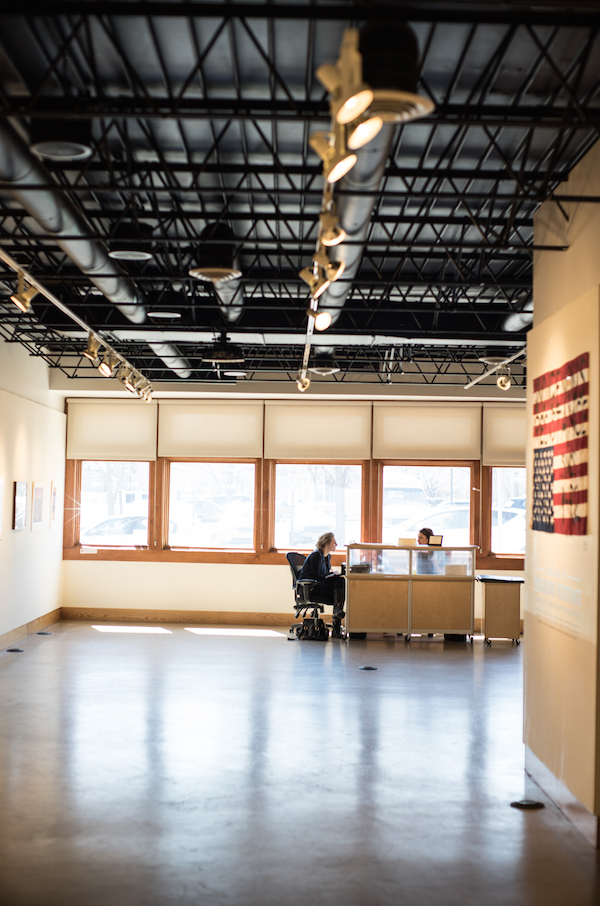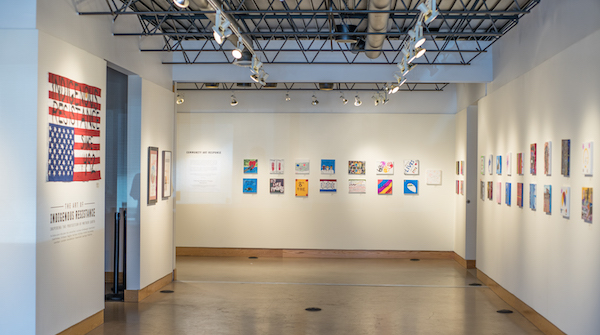
Words by staff writer, Morgan Mercer // Photos by Marie Ketring
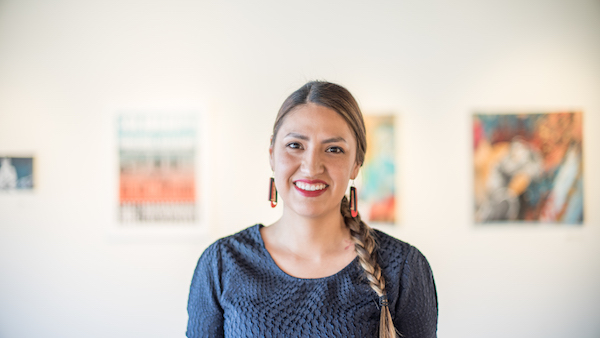
You could say a flair for the creative runs in Graci Horne’s family. With a mother who trained as a studio artist and an aunt who worked as a curator, it’s no surprise Graci found herself drawn to art, too. But she didn’t secure her path in life until an impromptu trip to the Institute of American Indian Arts in Santa Fe. She visited the campus in the hopes of convincing a friend to go back to school, but instead she found a Native-driven curatorial program she couldn’t pass up.
“It was love at first sight,” says Graci. “I found out curation is its own art form.”
After graduating, Graci moved back to Minneapolis and took a job working as the assistant curator for All My Relations — the Native American Community Development Institute’s (NACDI’s) gallery. Now, less than a year later, she’s taking the reins as the gallery’s new director and curator. She’s ready to put her curatorial chops into practice and use her new position to promote both contemporary and traditional American Indian Art.

What’s the local Native arts community like?
“Native contemporary arts in Minneapolis have a very strong foundation. I have an aunt who ran galleries in San Francisco. In Oakland they have a good Native hub like we have here. She said in the span of 15 years, nine galleries sprung up and then went down. It was all Native contemporary art, but they never had a good foundation. If you look at us, we’ve been up since 1999. We get a lot of support. A lot of people come in as a point of access to the arts. I think up here, we’re one of the galleries that has longevity, and we’ve made a success out of being a place to show both traditional and contemporary art.”
Why can galleries maintain that longevity here?
“It’s the community. It’s not to say that we’re perfect or anything. If you think about it, before the gallery came here it took a nonprofit Native organization to swoop it up and keep it going. But it’s the community that shows up. It’s both that we’re creating those opportunities for ourselves and that the community is very supportive of it. For example, this mini art wall in Pow Wow Grounds Coffee was just wall real estate. Nothing was there. Now we’ve branded it as the Mini Art Wall. It’s not just for Native artists; it’s open to the community. The community really loves that wall. They want to see what’s going to happen. Outside the Native community, we also have other organizations interested in us. We have patrons that are non-Native who love what we do here. This is a point of access where they can go to see Native artwork. I think that’s the difference.”
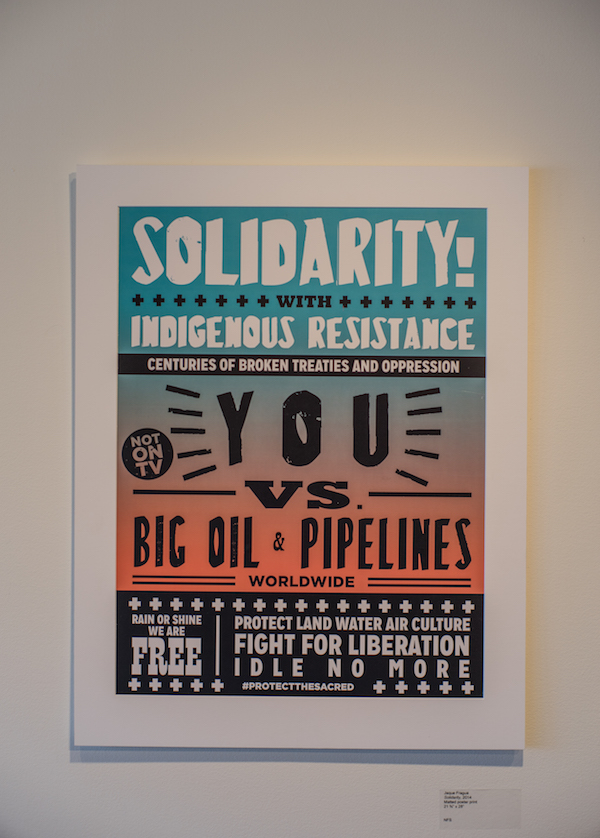
How would you describe your curation style?
“When I first started this, one of the amazing things my mom taught me was that Native curation is different because we’ve always had artwork. Our dresses, the things that we slept on, the things that we put our heads on, the things that we carried, the things that we drank out of, the things we wrapped a baby in or that a baby played with — that was all artwork. But it was used. Everything was used. My mom told me that when you curate you have to interpret spirit, because that’s what artwork means to us. It’s a healing mechanism.
You’re interpreting your soul and you’re interpreting your spirit.
Every time you curate, you need to smudge and you need to interpret that spirit. You need to get centered because you need to interpret that piece of artwork on the level of being connected to that person’s soul. For me, it’s a spiritual act.”
As the new director, where do you hope to take the gallery and how do you hope to grow?
“In the future I want to see more installation artists. I want to see more performance artists. When I was in the southwest, it was super easy to find a Native DJ for events. It was nice. Up here, I only know of one. We have this ability to keep growing.
My main focus is to try to get more Native professionals that will represent our art in a good way and will know how to do this.
I’ve always heard this dream that someday we’re going to get a Native contemporary museum. This museum will have contemporary Native artists and galleries like the Minneapolis Institute of Arts, where there are different levels and different rooms where there are different genres [of art]. I want to do the same thing. Probably not that huge, but I would like to see in 20 years from now where it’s going to happen. That would be awesome to get a building where we can show every genre of Native American art. It would be nice to have a place for people to go.
How is your work at All My Relations laying the groundwork for that vision?
“I feel like education is a weapon. For me, if I can encourage just one more person to be educated about the history of museums and how it has interacted with Native American culture, that’s huge. I want to educate people to know about [repatriation]. I want them to know that it has a definite role-play within our history and our history of colonization. That’s something we need to educate ourselves about. We need to invest. We need to learn. We need to represent ourselves. It’s totally possible. We don’t need to wait for someone who has the money or the education to help us. We can do it ourselves.”
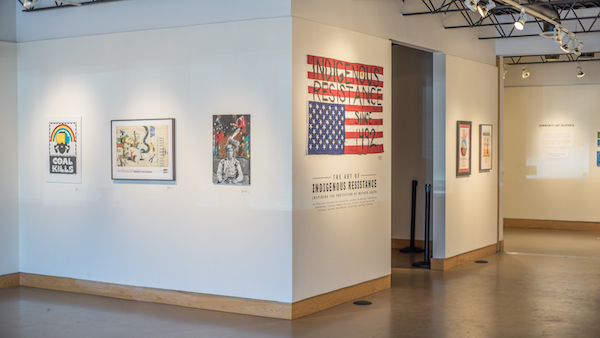
What’s one thing you’re most excited about right now?
“What I’m excited about right now is our current exhibition, ‘The Art of Indigenous Resistance: Inspiring the Protection of Mother Earth.’ When we created this exhibition we wanted to have a project that connected the community to the art of activist, because activism is really big in this community. Before the Indigenous People’s Day was created, I was one of those little teenagers just down the road holding signs and bothering people to abolish Columbus Day. I never thought I’d see the day where it would [happen]. I remember aunts and uncles — the old activist ones —would get burned out at a certain point. It was kind of this fading belief that things could change.
I feel like with the art of Indigenous resistance, it kind of reignites that hope.
All these pieces of art were used for campaigns: Idle No More, Water is Life, and Coal Kills. These images were created to unify groups of people to get them to imagine what was going to happen in the future and what could be possible for change. Right now this is what gets me excited because I feel like it goes somewhere. The issue of wanting clean water, wanting clean air, and wanting a healthy planet and mother earth — it’s not just a Native thing; it’s all of us. We all have to live here.”
